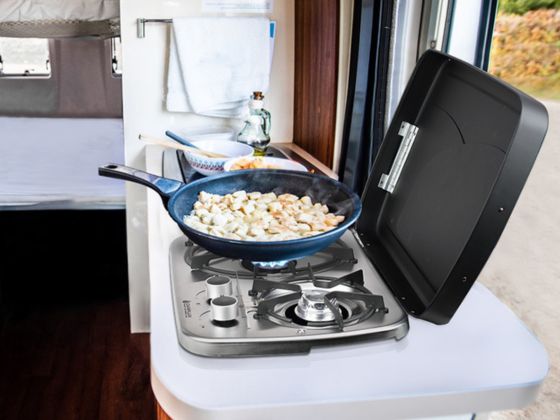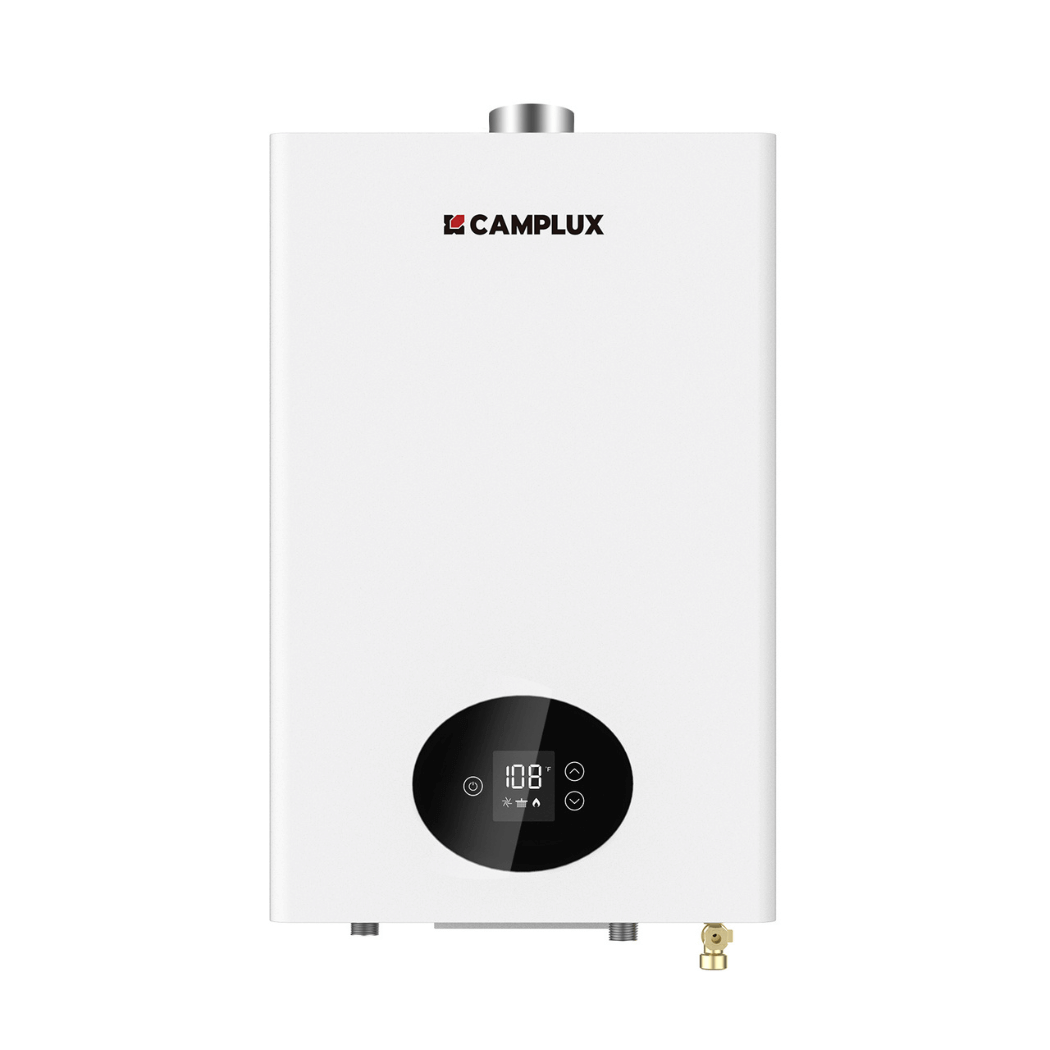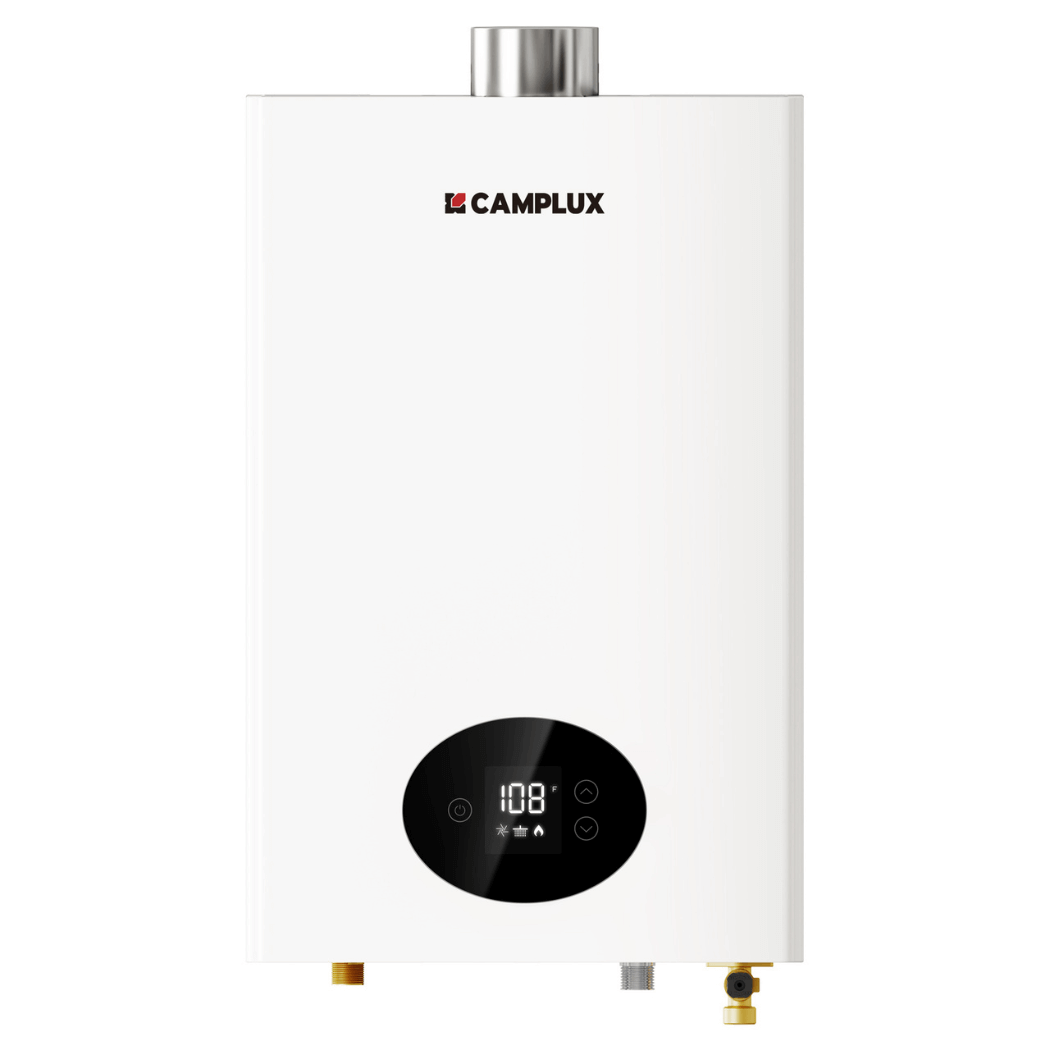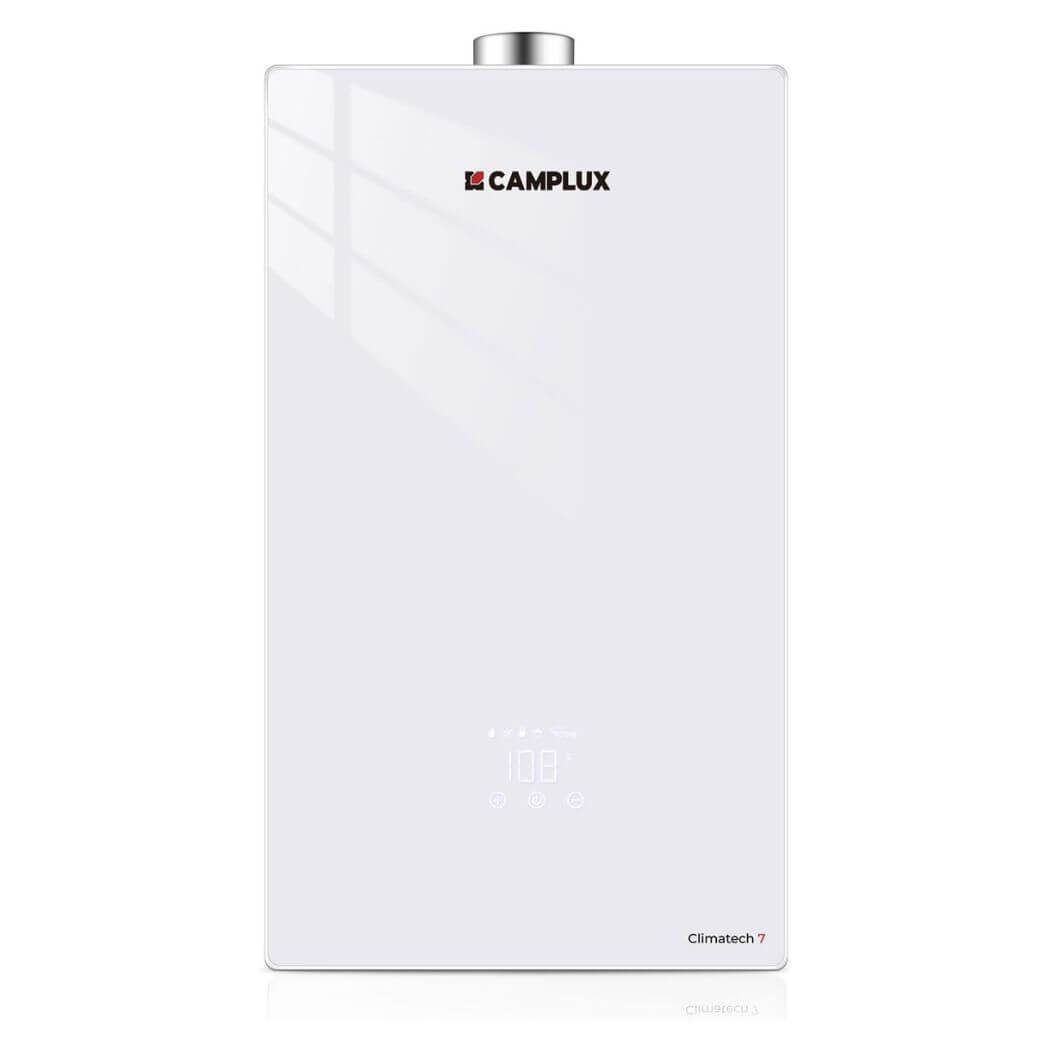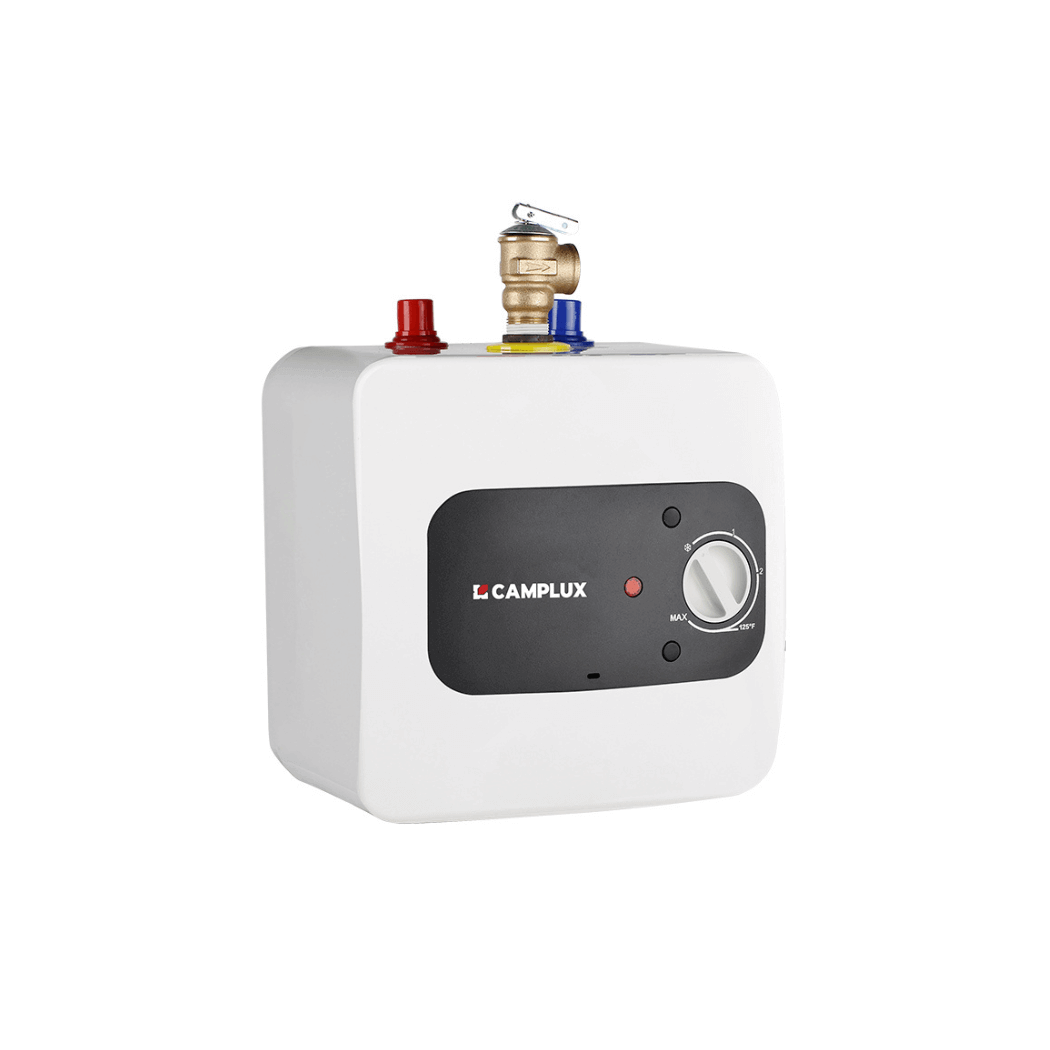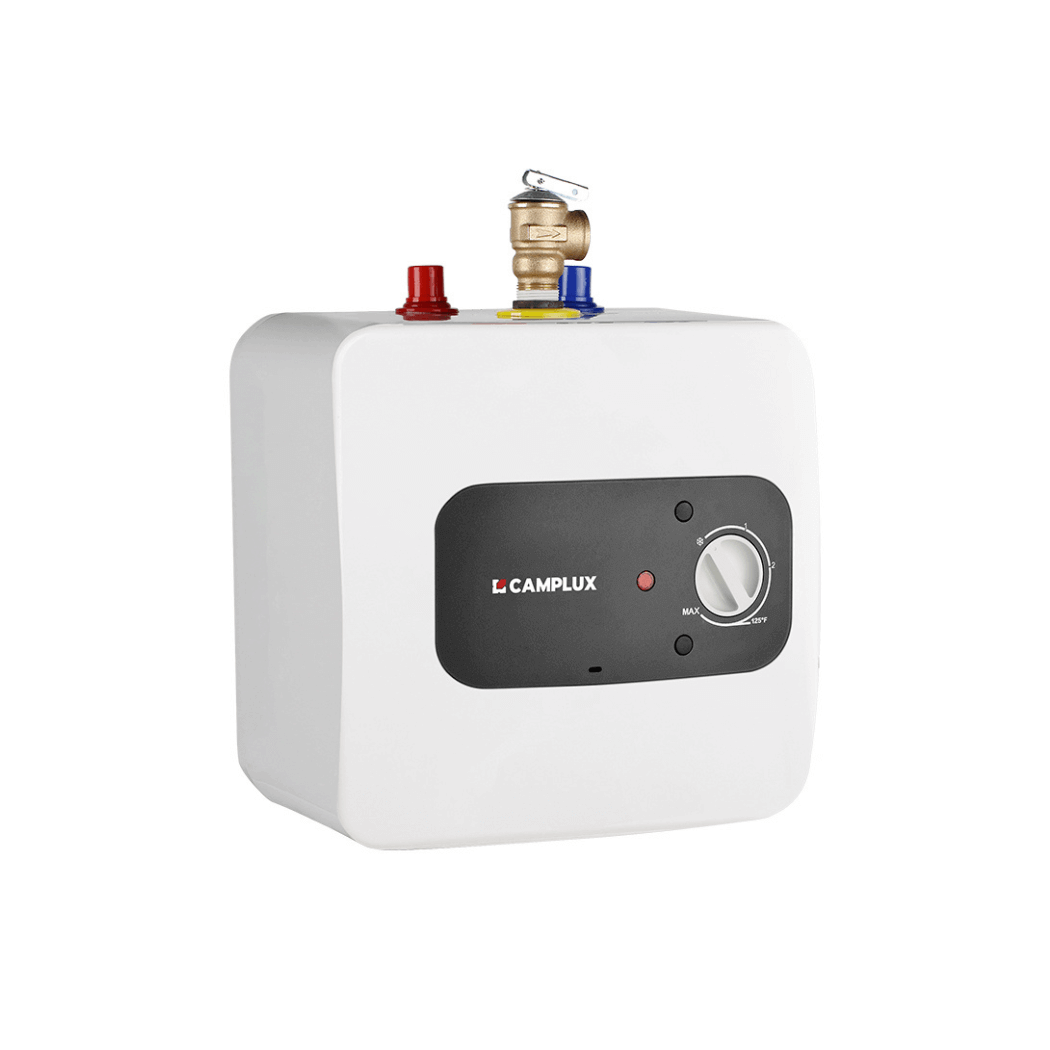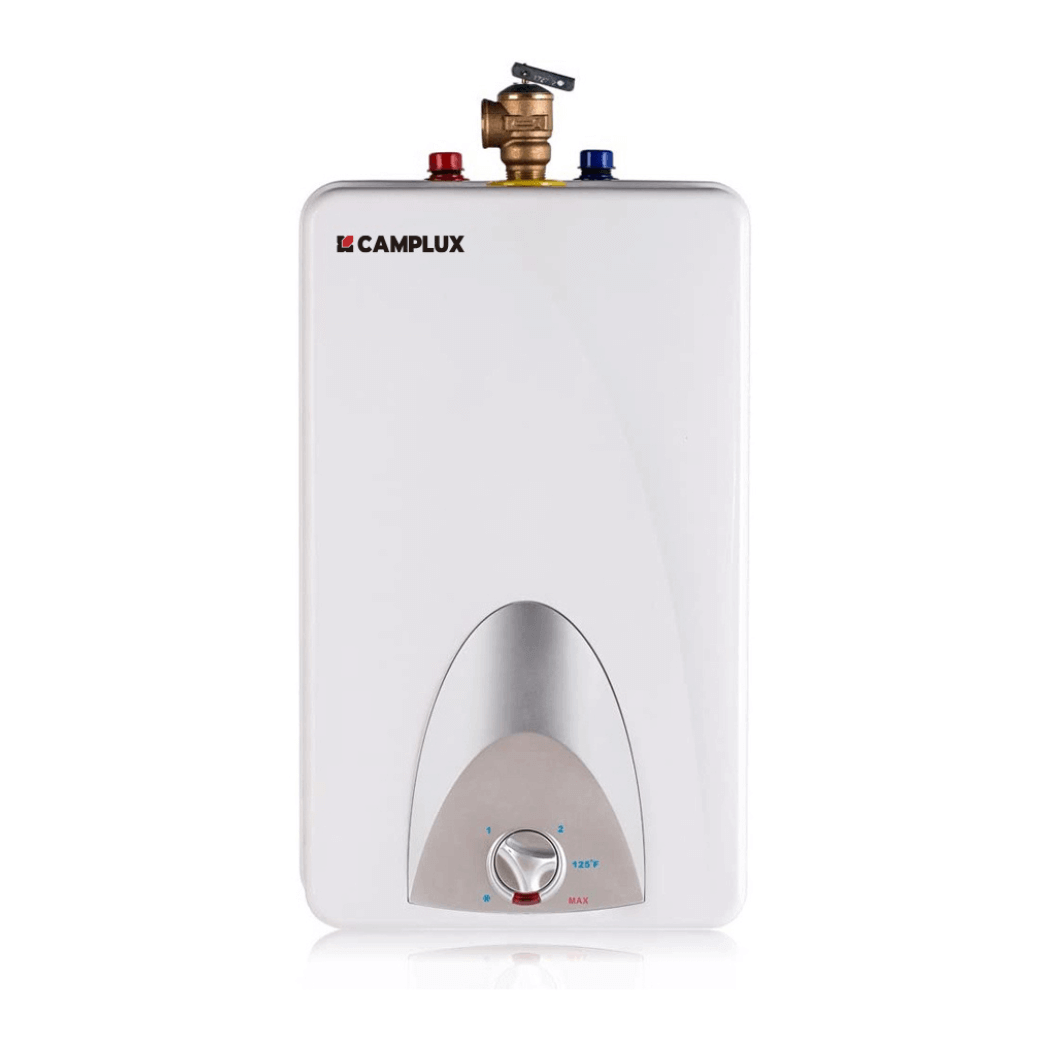Embarking on the journey to install an electric tankless water heater in your RV can be an exciting yet intricate endeavor. This upgrade promises the allure of endless hot water, space savings, and energy efficiency. However, it's essential to understand the nuances of such a system, from the selection process to installation and maintenance. This article will guide you through the critical steps and considerations for integrating this modern convenience into your RV lifestyle.
Key Takeaways
- RV tankless water heaters offer continuous hot water and are more energy-efficient compared to traditional water heaters with storage tanks.
- Electric tankless water heaters for RVs are not feasible due to the high power requirements; thus, propane is the common fuel source.
- Many tankless water heaters are designed for easy DIY installation in standard RV compartments, with retrofitting often being straightforward.
- Proper maintenance and understanding the control panel are crucial for optimal performance and troubleshooting of RV tankless water heaters.
- When choosing a tankless water heater, consider the connection locations, size, budget, and the brand that best fits your RV needs and lifestyle.
Understanding RV Tankless Water Heaters
What is an RV Tankless Water Heater?
An RV tankless water heater is a modern solution for providing hot water on demand in recreational vehicles. Unlike traditional water heaters that store and continuously heat water, RV tankless water heaters heat water directly as it flows through the device, ensuring a constant supply of hot water without the wait.
Electric tankless water heaters for RV use are designed to be compact and efficient, occupying less space and using less energy than their tank counterparts. This makes them an ideal choice for RVers looking to maximize their living space and minimize energy consumption.
- Instantaneous hot water supply
- Energy efficiency
- Space-saving design
- Reduced weight compared to tank systems
With the advent of tankless technology, the days of rationing hot water in your RV are over. Now, you can enjoy the comfort of continuous hot water, whether you're washing dishes, taking a shower, or needing a warm rinse after a day outdoors.
Benefits of Switching to a Tankless System
Converting your RV water heater to a tankless system comes with a multitude of advantages. You'll enjoy the convenience of unlimited hot water on-demand, meaning no more waiting for the tank to refill and reheat. Imagine taking real showers in your camper without the interruption of running out of hot water.
They are efficient
- No energy is wasted heating water in a holding tank.
- Reduction in size and weight, offering a smaller footprint and less to carry.
- Less maintenance due to minimal scale or rust buildup.
With a tankless water heater, you can save space and reduce weight in your RV. No more lugging around a heavy tank filled with water! Plus, a tankless water heater is designed to provide hot water precisely when you need it.
Additionally, these systems are often more energy-efficient, leading to potential savings on utility bills. The initial investment might be higher, but the long-term benefits and cost savings can be significant for avid RV travelers.
Electric vs. Propane Tankless Water Heaters
When considering a tankless water heater for your RV, the choice between electric and propane is pivotal. Electric tankless water heaters are valued for their efficiency and the convenience of using the campsite's electricity. They activate when you demand hot water, heating it on-the-fly without the need for a storage tank. On the other hand, propane tankless water heaters are known for their ability to provide hot water in situations where electricity may be scarce or unreliable.
Propane models are particularly suitable for RVs that venture into remote areas where hooking up to an electrical source isn't always possible.
However, electric models can be more cost-effective if you frequently stay at campsites with electrical hookups. Here's a quick comparison to help you decide:
- Electric Tankless Water Heaters: Often less expensive upfront, rely on electrical connections, and may offer lower operating costs at campsites.
- Propane Tankless Water Heaters: Offer independence from electrical sources, potentially higher flow rates, and are preferred by many for their performance in a variety of conditions.
Ultimately, the best choice depends on your travel habits, access to utilities, and personal preferences.
Choosing the Right Tankless Water Heater for Your RV
Assessing Your Budget and Needs
Before choosing a tankless water heater for your RV, it's crucial to assess both your budget and your specific needs. Consider the initial purchase price, installation costs, and long-term energy savings when setting your budget.
It's important to measure the available space and ensure compatibility with your RV's existing plumbing and electrical systems. Here's a quick checklist to help you evaluate your needs:
- Measure the space for the water heater
- Check for areas needing repair
- Label your plumbing for easy identification
Remember, a well-planned budget and clear understanding of your needs will lead to a more satisfying purchase and installation experience.
Top Tankless Water Heater Brands
When selecting a tankless water heater for your RV, brand reliability and customer satisfaction are key. Camplux, Recpro and FOGATTI are among the top contenders, offering a range of prices and features to suit various needs. For instance, the Camplux RV Tankless Water Heater is currently priced at $699.99.
Electric tankless water heaters, are praised for their digital displays and self-modulating technology.
Remember to consider the energy source, installation requirements, and warranty when making your choice. A well-informed decision will ensure you enjoy the convenience of hot water on your travels without any hiccups.
Comparing Connection Locations and Sizes
When considering an RV-specific tankless water heater installation, it's crucial to compare the connection locations of your current water heater with those of the new tankless model. Ensure that the plumbing or gas supplies needed to securely connect the tankless water heater to your RV's plumbing system are readily available.
Before proceeding, measure the space available and check for any areas that may need repair, such as dirt accumulation, rust, or holes. Label your plumbing accurately to avoid confusion with the various loops and valves, including the hot water inlet and outlet, and other system components.
Here's a quick checklist to guide you through this comparison:
- Measure the space for the new tankless water heater.
- Note the size and thread type of all fittings.
- Label plumbing loops and valves clearly.
- Determine the electrical supply requirements.
Remember, the higher the flow rate required, the larger the unit may need to be. This could mean upgrading your electrical system to accommodate the new tankless water heater, including installing larger wires and breakers.
The Installation Process

Can You Install It Yourself?
Deciding whether to install a tankless water heater in your RV can be a complex decision. Installation feasibility depends on your technical skills and the complexity of the system. For those with a knack for DIY projects and a basic understanding of electrical and plumbing systems, self-installation is a viable option.
However, it's important to consider the logistics of your RV lifestyle. If you're often connected to water and sewer, the convenience of endless hot water can be a game-changer. On the other hand, if you frequently find yourself off-grid, the benefits may not outweigh the installation effort and costs.
- Evaluate your technical ability and comfort with tools.
- Consider your typical RV usage – connected to utilities or off-grid.
- Assess the potential benefits versus the installation effort.
Before making a decision, reflect on your RV usage patterns and whether the constant supply of hot water justifies the installation.
Tools and Materials Required
Before you begin the installation of your electric tankless water heater, it's essential to gather all the necessary tools and materials. Having the right equipment on hand will streamline the installation process and help prevent any unnecessary interruptions.
To start, you'll need the actual electric tankless water heater unit. Ensure you have a compatible screwdriver and an adjustable wrench for securing connections. A pipe cutter or hacksaw will be required for adjusting pipe lengths to fit your RV's specific setup. Here's a basic list of what you should have before you get started:
- Electric tankless water heater
- Screwdriver
- Adjustable wrench
- Pipe cutter or hacksaw
- Teflon tape
- Mounting hardware
- Electrical components (as specified by the manufacturer)
Remember, double-checking your RV's electrical system compatibility with the new heater is crucial to avoid any electrical mishaps.
Lastly, ensure you have all the necessary electrical components, which may include wires, connectors, and a circuit breaker, as specified by the heater's manufacturer. This preparation will pave the way for a smooth and successful installation.
Step-by-Step Installation Guide
Following the instruction manual, the installation of your electric tankless water heater can be a straightforward process. Ensure all power sources are disconnected before beginning the installation to prevent any electrical hazards.
Installation typically involves these key steps:
- Mount the water heater unit to the wall, ensuring it is securely fastened and level.
- Connect the water supply lines to the inlet and outlet ports of the heater.
- Attach the power cables to the designated terminals, adhering to the electrical requirements specified in the manual.
- Install any necessary venting components if your model requires them.
- Turn on the water supply and check for leaks at all connection points.
- Reconnect the power and activate the unit to begin heating water.
It's crucial to follow the manufacturer's guidelines for installation to ensure optimal performance and safety. Improper installation can lead to water damage, electrical issues, or even void the warranty.
Remember to consult with a professional if you encounter any difficulties during the installation process. Safety should always be your top priority.
Adjusting and Using Your New Tankless Water Heater
Setting the Ideal Temperature
Achieving the perfect balance of hot water in your RV can be a game-changer for comfort on the road. Many people suggest setting your tankless to your ideal hot water temperature for showering, and then using only the hot water tap. This method eliminates the need to mix cold water, simplifying the process and ensuring consistent temperature during use.
The touch screen or control panel on your electric tankless water heater allows for precise temperature regulation. For instance, you might set the temperature to a cozy 113
F on the user control panel. Once set, the heater will maintain this temperature, providing a steady flow of hot water without the need for adjustments mid-shower.
It may take some trial and error to find the perfect setting, but once dialed in, the convenience of a consistent hot water supply is undeniable.
Remember, the goal is to find a temperature that is comfortable for all users and to be mindful of the energy consumption. Smart modulation features in many models can help save energy by adjusting the heating power to match the flow rate of water, ensuring you're only using what you need.
Understanding the Control Panel
Once your electric tankless water heater is installed in your RV, familiarizing yourself with the control panel is crucial for efficient operation. The control panel is your gateway to customizing your water heating experience. It typically features a digital display and a variety of buttons or dials that allow you to adjust the temperature and monitor system status.
Temperature settings can usually be increased or decreased in small increments, giving you precise control over the heat of your water. Here's a simple guide to what you might find on the panel:
- Power Button: Turns the heater on and off.
- Temperature Display: Shows the current water temperature.
- Temperature Adjustment: Buttons or dials to set your desired temperature.
- Error Messages: Alerts you to any operational issues.
Remember to always consult your specific model's manual for detailed instructions, as control panels can vary between different brands and models.
Understanding how to effectively use the control panel will help you maintain the ideal water temperature and ensure your system runs smoothly. If your unit requires specific voltage or fuel sources, this information will also be accessible through the control panel, making it a vital aspect of your tankless water heater's functionality, especially during the winterizing process.
Troubleshooting Common Issues
When your RV tankless water heater encounters problems, it's crucial to have a troubleshooting guide at hand. No hot water is a common issue that might be due to several factors, such as power supply problems or a malfunctioning heating element. Insufficient hot water and water temperature fluctuations can often be resolved by checking for cross-connected pipes or adjusting the flow sensor.
Another frequent problem is the heater not igniting, which could be linked to gas supply issues in propane models or electrical faults in electric ones. Odd noises from the unit should prompt an inspection for sediment build-up or loose parts. Leaking is a serious concern and should be addressed immediately to prevent water damage. Lastly, error codes displayed by the heater can be deciphered using the manufacturer's manual to pinpoint specific issues.
Remember, regular maintenance can prevent many common issues. However, if you're experiencing persistent problems, it may be time to consult the troubleshooting section of your installation manual or seek professional help.
Maintenance and Safety Considerations
Regular Maintenance Tips
To ensure the longevity and efficiency of your electric tankless water heater, regular maintenance is crucial. Inspect your system periodically for any signs of wear or damage, such as corrosion or leaks. It's important to keep the intake filter clean to prevent blockages that can reduce heating efficiency or damage the unit.
Descale your heater annually to remove any mineral buildup that could impair its performance. This is especially important in areas with hard water. Use a non-corrosive descaling solution and follow the manufacturer's instructions carefully.
Here's a simple checklist to help you stay on top of maintenance:
- Check and clean the intake filter every six months.
- Descale the heating elements once a year.
- Inspect for leaks or signs of corrosion during each maintenance session.
- Test the unit's performance and adjust settings as needed.
Remember, regular maintenance not only extends the life of your heater but also ensures it operates at peak efficiency, providing you with instant hot water whenever you need it.
Safety Precautions and Ventilation Requirements
When installing an electric tankless water heater in your RV, safety should be your top priority. Proper ventilation is not just a recommendation; it's a necessity to prevent the buildup of harmful gases. Ensure that your installation complies with all safety standards, including the use of a pressure relief valve, over temperature protection, and automatic shut off features.
Advanced safety features are integral to the operation of your water heater. These may include vibration resistance, blower block protection, and an access door for easy maintenance. It's also essential to ensure that the electrical and fluid systems are completely separated to prevent electric leakage and water pipe corrosion.
Remember, a well-ventilated space is crucial for the safe and efficient operation of your electric tankless water heater. Without adequate ventilation, you risk exposure to harmful gases and other safety hazards.
Lastly, familiarize yourself with the various components of your RV's plumbing system. Labeling each part, such as the hot water inlet and outlet, can simplify future maintenance and troubleshooting.
When to Seek Professional Help
While many RV enthusiasts are adept at handling various upgrades and repairs, installing an electric tankless water heater can be complex. Professional installation ensures safety and compliance with warranty requirements. It's essential to recognize when a task surpasses your expertise.
Professional help is particularly recommended if you encounter the following:
- Electrical upgrades beyond your skill level
- Modifications to the RV's structure
- Uncertainty about the correct installation process
- Complex plumbing configurations that require specialized knowledge
Remember, incorrect installation can lead to performance issues and may even pose safety hazards. It's better to invest in professional services than to risk costly damages or voiding your warranty.
Always consult the installation manual and heed the manufacturer's advice. If you're unsure at any point, don't hesitate to contact a certified technician. They can provide the necessary expertise to ensure your tankless water heater operates efficiently and safely.
Ensuring the longevity and safety of your outdoor, mobile home, or residential appliances is paramount. Regular maintenance is key to preventing accidents and ensuring efficient operation. Don't wait for a malfunction to remind you of the importance of upkeep. Visit our website for comprehensive guides, manuals, and the option to schedule maintenance services. Keep your equipment in top condition and enjoy peace of mind with our expert support.
Conclusion
Installing a tankless water heater in your RV can be a rewarding DIY project that not only provides endless hot water but also saves space and energy. While it's true that electric tankless options are not available due to power constraints, propane-fueled models offer a practical solution. With advancements in technology and a decrease in cost, upgrading to a tankless water heater is more accessible than ever. Remember to carefully compare connection locations, understand your fittings, and adjust settings for the ideal temperature. Ultimately, the benefits of a tankless water heater, such as efficiency and the luxury of continuous hot water, make it a worthwhile investment for your RV, especially if your current system is due for an upgrade.
Frequently Asked Questions
Can I install a tankless hot water heater in my RV myself?
Yes, many RV tankless water heater models are designed for easy retrofitting in standard RV water heater compartments, matching connection locations. While adjustments may be needed, DIY installation is typically feasible unless professional installation is required by warranty or purchase terms.
What are the best RV tankless water heater options for different budgets?
Options vary widely, with top budget choices like TRUMA available. Prices have decreased over time, making it more affordable to upgrade to a tankless system that provides continuous hot water as long as you have water, gas, and a 12V power supply.
Why are there no electric tankless water heater options for RVs?
Electric tankless water heaters require a significant amount of power to transfer heat to water at an efficient rate, typically needing at least 240 volts, which is not feasible in most RVs. Therefore, RV tankless water heaters currently rely on propane.
What are the benefits of switching to an RV tankless water heater?
RV tankless water heaters offer continuous hot water, are more energy-efficient, and save space and weight compared to traditional water heaters with storage tanks. They are particularly beneficial for older rigs or RV renovation projects.
How do I choose the right fittings when installing a tankless water heater in my RV?
When selecting fittings for installation, compare the connection locations on your old water heater with the new tankless model. Note the size and thread type of all fittings, even if you're unfamiliar with terms like NPT, GHT, compression, or flare, and consult with a hardware store if needed.
How do I adjust the temperature on my new RV tankless water heater?
To find your ideal hot water temperature, it may require trial and error. Set the tankless water heater to your preferred temperature for showering and use only the hot water tap. Most units have intelligent control panels that allow for easy monitoring and adjustment from inside your RV.





